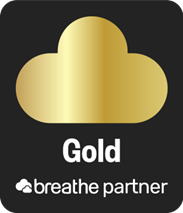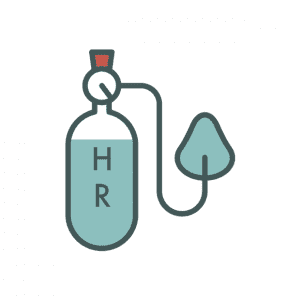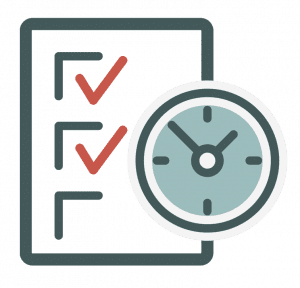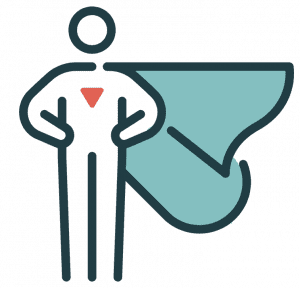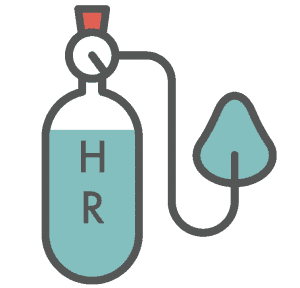Did you know that 700 construction workers take their own lives every year in the UK? That’s a minimum of two lives lost, every single day, which is a really scary and awful statistic. Unfortunately, I’ve had to deal with two suicides in my 24 year HR career, both of whom were male, which is two suicides too many, and let me tell you it’s the worst thing I have ever had to deal with – ever.
It’s a grim reality to remind us of the profound impact of mental health challenges, not just within the construction industry but in all sectors, but particularly those with high levels of men in the workforce.
As Business leaders it is essential for us to embed wellness into workplace culture into our daily management practices. And with so many strategic objectives competing for our limited budgets, it’s important to find low-cost or creative ways of doing this.
Fortunately, creating a wellness culture doesn’t always require a hefty budget, and to help you we’ve put together 7 low-cost strategies, that’s one a day for National Stress Awareness Week that we have personally used in our HR careers that you can immediately implement to significantly enhance workplace well-being and reduce stress in the workplace.
Strategy 1: Raise awareness and educate
Increasing awareness and educating staff about mental health challenges and the signs of burnout are crucial for dismantling the stigma and encouraging employees to seek help early. Why not book a lunch and learn session into the team calendar this week to get things started? I bet there is someone in the team who would be willing to talk about an aspect of wellbeing to the team.
Strategy 2: Daily mood tracking
We all wish we could find ways to help our employees have more good days at work and reduce the factors that contribute to stress, anxiety, reduced performance or absenteeism.
The best way to start understanding this is by daily mood tracking. It’s simple, effective and – best of all – free to do manually or via an app like OK Positive, or Daylio.
Encourage individuals to log their daily emotions and note what factors contributed to those feelings.
This not only promotes self-awareness but also provides valuable insights for both employees and management. Simple reflections on mood fluctuations can open doors to conversations around frustrations at work, sources of stress and general mental well-being.
Strategy 3: Monthly check-in conversations
Managers should be having informal check-in conversations with their team members about their wellbeing at least once a month.
This not only signals that their well-being is a priority but also creates an open dialogue around stress, work-life balance and mental health.
Strategy 4: Wellness-focused pulse surveys
Pulse surveys are a fantastic way to introduce more employee listening and gain valuable insights into employee engagement and workplace culture.
By incorporating wellness-related questions into fortnightly or monthly pulse surveys, employees can share their experiences and provide helpful feedback and data, anonymously.
Access to the data gathered in these pulse surveys enables a more agile approach to workplace wellness and creates the opportunity to tailor wellness interventions and strategies based on the specific needs and sentiments of individual teams or divisions.
Strategy 5 : Promote a healthy work-life balance
We shouldn’t need a Stress Awareness Week or legislation to force companies to promote a better work-life balance or offer more flexibility for their people. Limiting excessive overtime and promoting a healthy work-life balance are things essential for reducing stress in any industry – not just the construction industry, and the case for flexibility in working hours remains. It’s a powerful tool for promoting work-life balance and for improving inclusivity.
Without incurring any costs companies can allow their employees to adapt their schedules to better suit their preferred working styles and their personal lives. Flexible working hours not only contribute to employee satisfaction but also acknowledges the diverse needs and responsibilities of each individual employee.
Strategy 6: Introduce the use of Wellness Action Plans
This is something that the charity MIND created and we’ve used their template to create our own. It’s something you can ask your employees to complete which helps them to share the things that cause them to feel stressed or overwhelmed at work, and you can then meet with them to discuss and review it and then mitigate any risks you can. If you’d like a copy of our Wellness Action Plan get in touch.
Strategy 7: Introduce an Employee Assistance Program
We also know that providing employees with access to wellness resources such as an Employee Assistance Programme (EAP) is not always financially affordable for small businesses. But we do know of some great ways to get access to EAP’s that don’t cost the earth with costs of under £5 per person, per month, so please do get in touch with us if this is something of interest.
Additional Help and Resources
For those that unfortunately can’t afford to provide an EAP there are many charities and free resources available in the UK that you could signpost your employees to so just knowing about these is an important piece of information to have.
- Mind: Mind offers a range of resources, including information on mental health conditions, tips for well-being and access to their infoline for support.
- Samaritans: A helpline available 24/7, Samaritans provide confidential emotional support for anyone struggling to cope.
- CALM (Campaign Against Living Miserably): Focused on preventing male suicide, CALM provides support through a helpline and webchat.
Free apps and podcasts for mindfulness, mental health and menopause
There’s a plethora of both free and paid for mindfulness and meditation apps available. Some of the best free resources we have found during our research are available on YouTube or as podcasts.
- Insight Timer is a great app for free mood tracking, mindfulness, meditations and music. A fantastic tool to help employees reflect on their day, track their mood and then select a meditation or music to help relieve stress and sleep better. The paid version offers additional resources and courses.
- Woebot is the original free Cognitive Behavioural Therapy (CBT) chatbot. A cute little robot therapist on your smartphone, Woebot can help with relieving stress and anxiety and building confidence and becoming more resilient.
- Caria is a free app that offers menopause-related support and learning. The app has a ‘quick relief’ section to help reduce anxiety, practice mindfulness, feel more grounded or get through a hot flush. There’s also a helpful symptom tracker that will empower female employees with the data they need to advocate for themselves with medical practitioners.
- Headspace: An app offering guided meditation and mindfulness exercises, Headspace can be a helpful tool for stress reduction.
How can we help?
By implementing these free or low cost initiatives you’re not only investing in the well-being of your team but also laying the foundation for a sustainable culture of wellness.
Creating a wellness culture is an ongoing journey. Start with some of the free initiatives, gather feedback and adapt your approach based on the unique needs of your organisation and your people.
Let’s work together to enhance well-being within your workplace. Together we can break the silence surrounding mental health and help prevent suicide.
If you want to chat through or implement any of these ideas we have mentioned then we can arrange a time to meet with one of our team here.
Or, get in touch with us via help@merakihr.com and we’d be happy to review your Wellbeing policies to ensure that you are doing all that you can to provide a great place to work and create a culture of wellbeing with a sensible work life balance. Email us at help@merakihr.com




